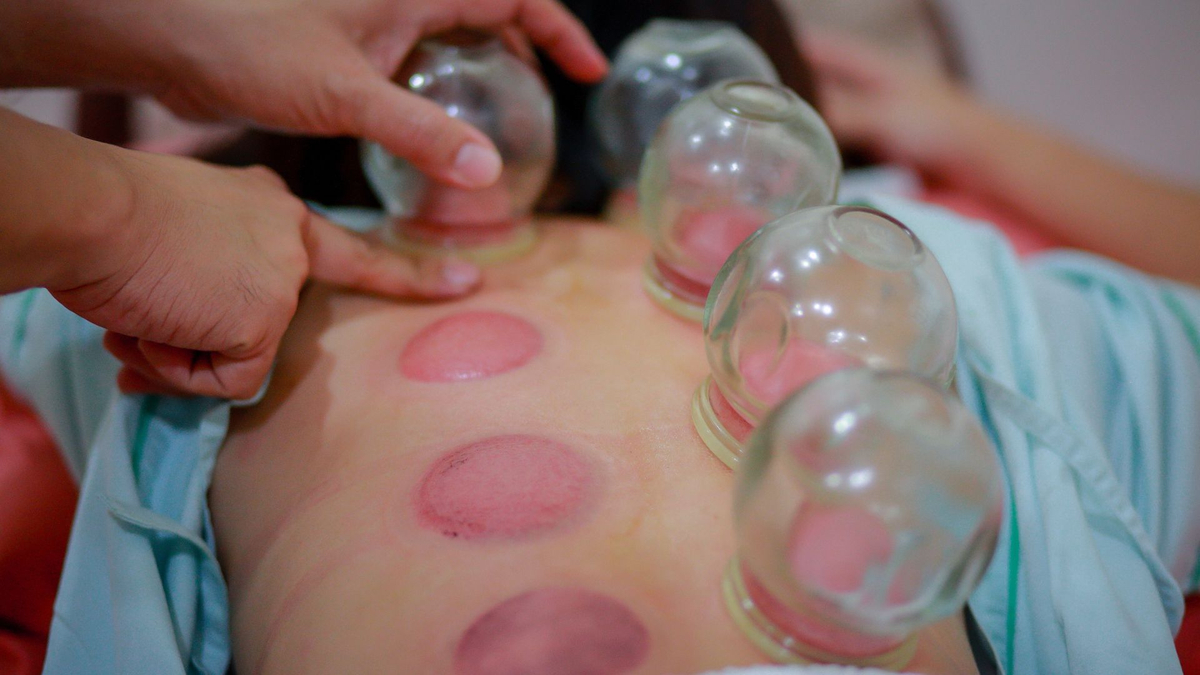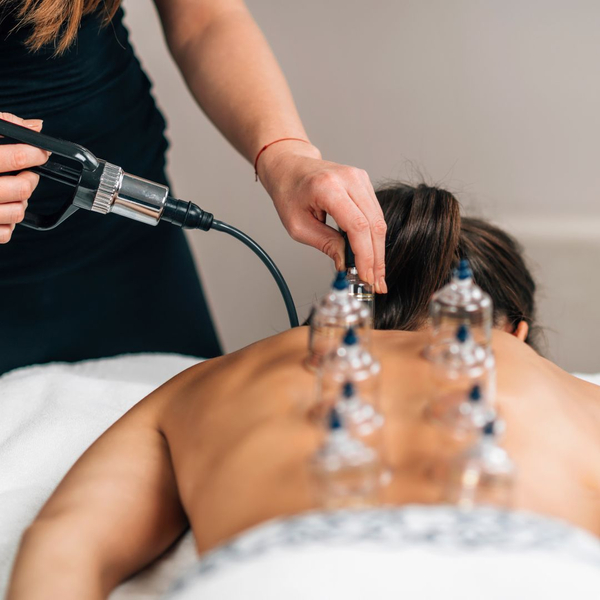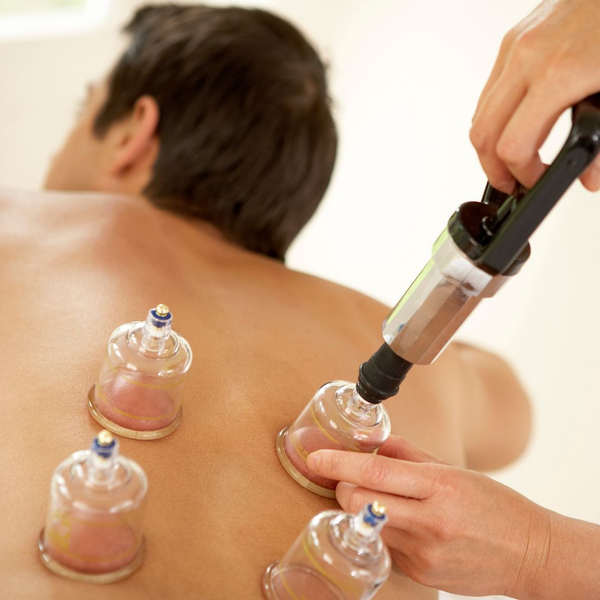Welcome to the world of cupping therapy at Denver Sports Recovery! If you're an active individual or an avid sports enthusiast seeking improved performance and accelerated recovery, you've come to the right place.

Cupping

HOW CUPPING THERAPY WORKS
Cupping is a traditional form of therapy that has been used for thousands of years. It involves using suction cups to apply pressure and create a vacuum on the skin to improve circulation, reduce pain and stiffness, and promote healing. Here's how it works:
1. Cups are heated to create a vacuum: Glass, plastic, or silicone cups are heated to create a vacuum inside the cup. The heat source can be a flame, such as a lighter, candle, or a pump.
2. Cups are placed on the skin: The cups are then placed on the skin and the vacuum is maintained to create suction. Depending on the desired therapeutic effect, this suction can be adjusted to create a light or deep pressure.
3. Suction pulls skin and fascia upward: The vacuum created by the cups pulls the skin and fascia upward, separating it from the underlying muscles and creating space for increased blood flow and oxygenation.
4. Increased circulation promotes healing: The increased circulation brought about by cupping helps to promote healing and reduce pain and stiffness in the affected area.

BENEFITS OF CUPPING THERAPY
Cupping therapy, widely recognized for its numerous health benefits, has gained significant popularity in recent years, particularly in the realm of sports recovery. From reducing muscle soreness to improving athletic performance, cupping therapy has proven to be an effective and natural method for sports enthusiasts to optimize their recovery and enhance overall well-being. Research has shown that cupping therapy has several potential benefits, including:
1. Pain Relief: A study published in the Journal of Pain in 2014 found that cupping therapy was effective in reducing pain in patients with chronic neck and back pain (Xiao, H., et al. "Cupping therapy for treating chronic neck and back pain: a systematic review and meta-analysis.").
2. Improved Range of Motion: A study published in the Journal of Physical Therapy Science in 2015 found that cupping therapy improved the range of motion in patients with neck and shoulder pain (Wang, S., et al. "The effect of cupping therapy on pain and range of motion in patients with neck and shoulder pain: a randomized controlled trial.”).
3. Reduced Muscle Soreness: A study published in the Journal of Athletic Training in 2015 found that cupping therapy reduced muscle soreness and improved athletic performance in collegiate gymnasts (Kim, J., et al. "The effects of cupping therapy on pain, swelling, and athletic performance in collegiate gymnasts.").
It is important to note that while these benefits have been shown in research studies, more research is needed to fully understand cupping therapy's effects and determine the best ways to use it for optimal benefits. Additionally, individuals should consult with a doctor or a licensed practitioner before starting cupping therapy, as it may not be safe or appropriate for everyone.
Get in touch with Denver Sports Recovery today to get more information to determine if cupping therapy is an effective technique for your recovery.
